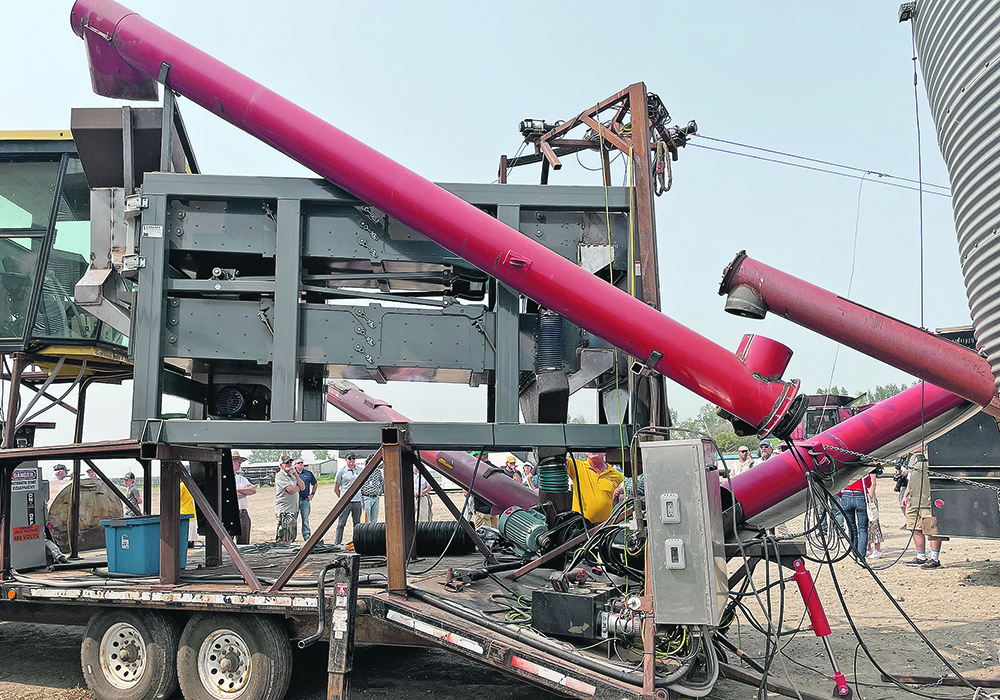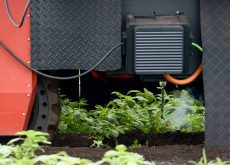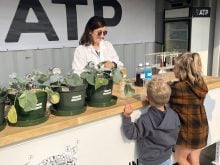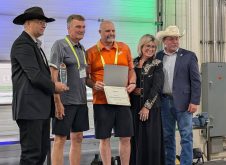Infield separator allows crops to be sorted before leaving the field to simplify both on-farm storage and sales
MIDALE, Sask. — The long winter’s work of separating mixed crops is getting easier on Rosengren Farms.
Colin Rosengren has been intercropping for 20 years and staff used to spend months cleaning and separating grain after harvest. So, he designed and built an infield separating system to do exactly what it says: separate each crop right in the field.
Related story: Pollinator strips experiment underway
Read Also
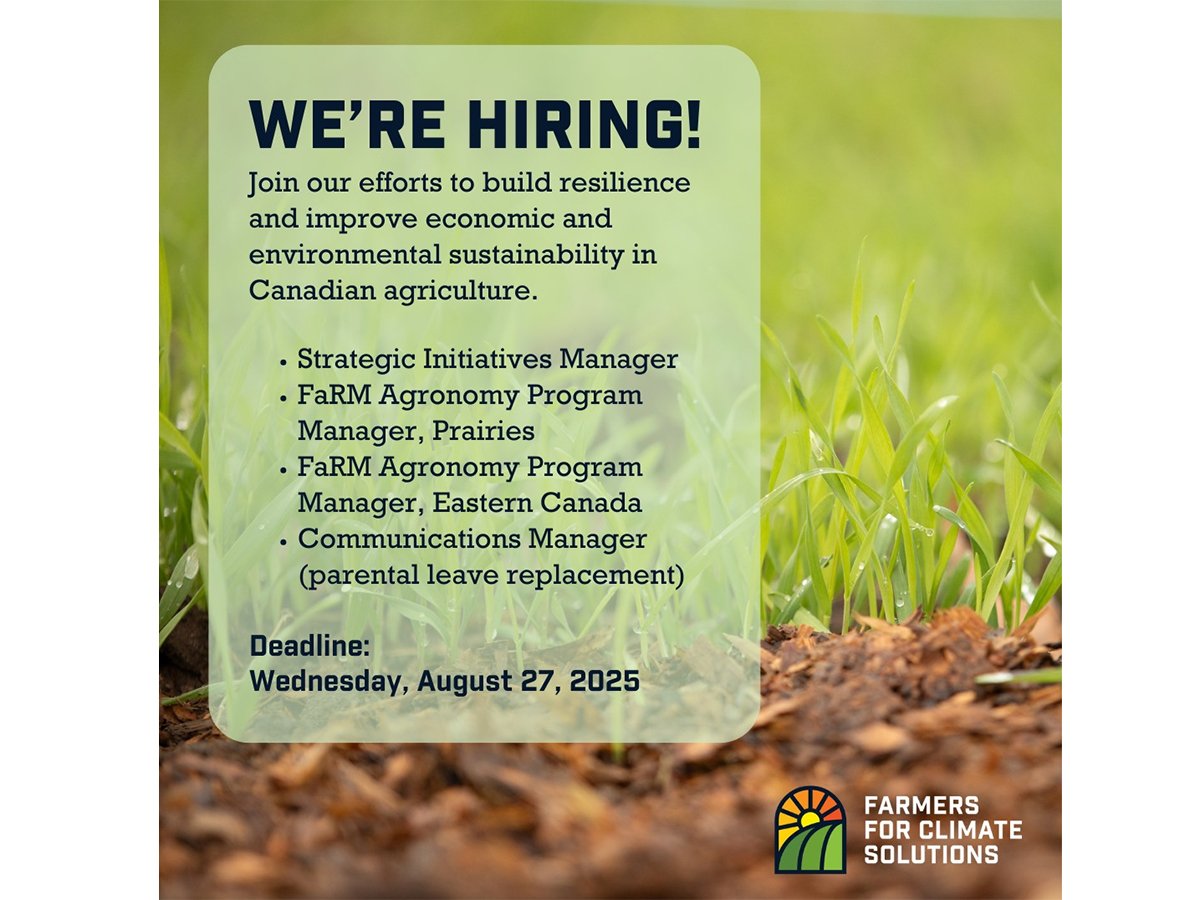
Environmental farm group has Ottawa’s attention
In 2021, Farmers for Climate Solutions published a report on how Canada should reduce emissions from agriculture. Not long after, the federal government implemented most of the recommendations in the report.
It uses a modified Garratt Industries separator and augers that fold up for easy transport and has capacity for 4,000 bushels an hour.
“The first year, it had some limitations,” he told an Avena Foods tour last month. “(The cleaner) had air on it, and both the intake ends and the output ends didn’t have the capacity. It was probably only handling 1,000 bushels an hour. We rebuilt both ends of it and kept the shakers and then we split the decks that weren’t split and did some modifications.
“There’s nothing like it out there.”
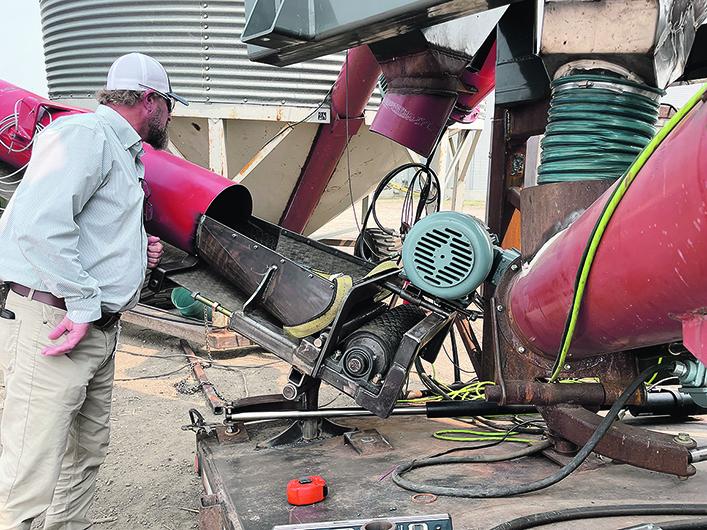
Once separated, each crop can be stored separately, which saves time through the winter.
Rosengren said farmers might be reluctant to try intercropping because of limited harvest and post-harvest options.
“If somebody did decide to produce (separators), it would really help other growers get into intercropping because that’s probably the number one challenge. The seeding equipment is not hard to get your head around but harvest is a challenge.”
Those on the Avena tour believe more intercropping, considered a regenerative agriculture practice, is a good thing. Many buyers come from companies with sustainability pledges.
Rosengren said intercropping reduces fertilizer use, helps fight pests and diseases and optimizes water use.
At a field of maple peas planted in a mixed row with Nexera high-oleic canola, he said he applied 20 pounds of nitrogen and about 25 lb. of phosphorus.
“No fungicide application, no insecticides,” he said. “There are no real issues that we were watching or even concerned about.”
The seeding rate was 100 lb. of peas and about two lb. of canola this year. Rains were timely at about 25 millimetres every few days in the early season and about 70 mm right before the July heat wave.
In this crop, he used Odyssey, saying the chemical works better on an intercrop.
“Yield-wise, we’re hoping this should be 150 per cent of if you had a pea or canola,” he said.
This particular field will probably be barley next year but Rosengren has no fixed rotation.
“We usually grow about nine different crops on the farm each year so rotations happen almost by default,” he said.
“We wouldn’t be scared to go back to pea-canola but it might be flax-chickpea. We just kind of go by what weed problems we’re dealing with, what the soil fertility levels are and see what the markets are and adjust accordingly.”
Avena customers also saw a flax-chickpea field, seeded alternately with two rows of each crop. Rosengren said he sees better disease resistance with the two-row design.
“It buys us a lot more time before we have to spray fungicide.”
He added no fertilizer to this field. Chickpeas are a strong scavenger crop and will supply the flax as the roots wrap together.
“Most years the flax will yield as good as it would on its own,” he said.
Although Rosengren has been intercropping for years, he still tries new things.
For example, he had limited success planting peas with a cereal in mixed rows because cereals are so competitive.
“We’re thinking about trying it with new seeding equipment to alternate rows. With cereals in an intercrop, that’s going to be our success, so the other crop has some space to establish and get going.”
This fall, he will try a combine with a stripper header.
“It’s not new technology but it’s new to us in this area. I think it’s something we should have been using for years.”
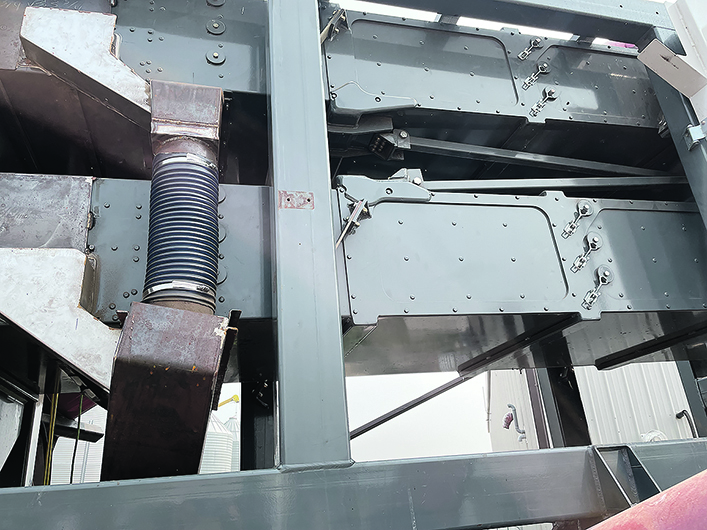
He intends to use it on barley, durum and canola fields to leave as much straw standing as possible. That will provide more snow catch on the field.
“More than that, on windy days like today, it creates a windbreak near the surface of the ground and keeps that ground (moisture) from evaporating, so we can put more water through the plants rather than losing it to the air.”
Less fuel is used because less material is going through the combine.
Rosengren has implemented full traceability for his crops using Grain Tracker.
“We’ve got a Grain Tracker box on the combine right next to the cab and we’ve got an RFID scanner and every time this combine pulls up to the grain cart, we’ve got tags on the side and just like scanning your groceries, it automatically makes a scan and transfers all that data, passively.
“That load is moved to the cart along with all the data as to where it came from, what grade it was, all other collected information, yield data, moisture data, whatever else we’re collecting on the combine.”
The same thing happens when the cart unloads to the truck. At this point it also gathers scale data from the cart. At the grain bin, another scanner on the auger scans the truck and the bin, recording which truck delivered into which bin.
“It’s a passive system. Nobody has to enter anything, and we’ve got full traceability,” Rosengren said.


